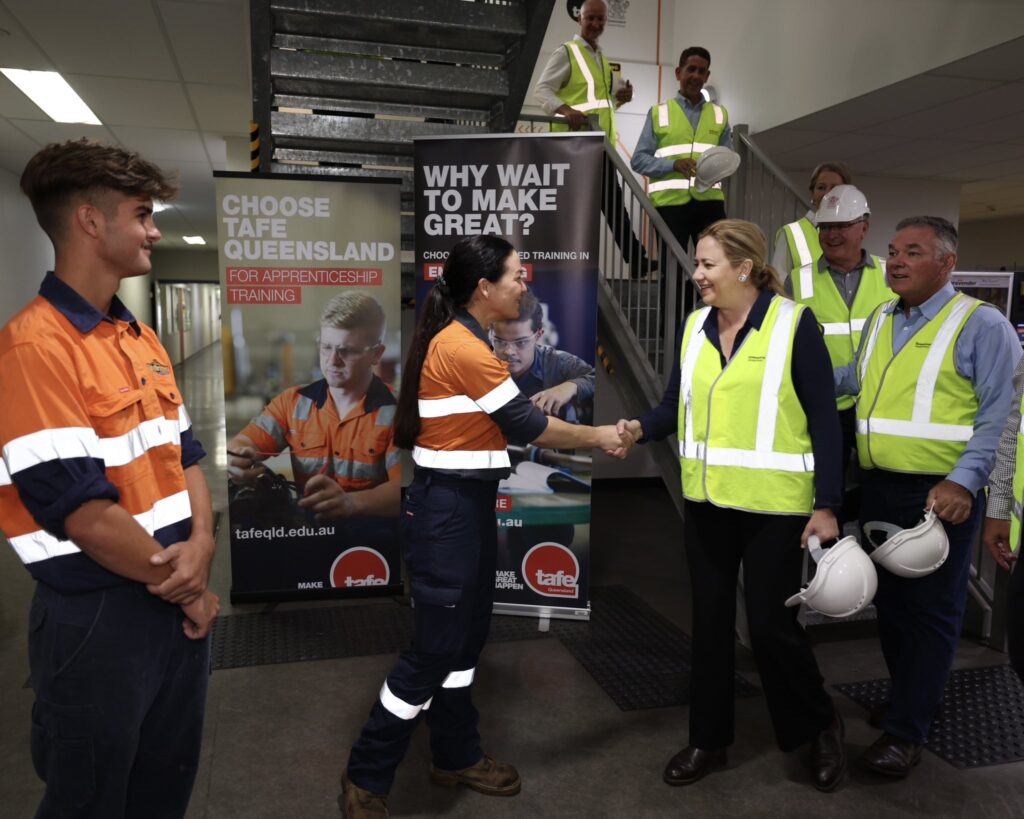
The Premier of Queensland today announced a major transmission line project to unlock 6GW of renewable energy, enabling the Australian state to realise its ambitions to create a homegrown clean energy value chain.
Called ‘Copperstring 2.0,’ early works on the A$5 billion (US$ 3.3 billion) project – of which A$500 million will come from coal royalties – will start this year, with construction planned for next year.
Enjoy 12 months of exclusive analysis
- Regular insight and analysis of the industry’s biggest developments
- In-depth interviews with the industry’s leading figures
- Annual digital subscription to the PV Tech Power journal
- Discounts on Solar Media’s portfolio of events, in-person and virtual
The transmission project is expected to be completed by 2029 and will connect the North West Minerals Province to the National Electricity Market.
Once the work is completed, the 1,100km high voltage transmission line will unlock Australia’s largest renewable energy zone (REZ), according to the local government, adding that it will connect vast renewable resources with critical minerals mining and processing which could be used to build batteries and renewables equipment including solar PV modules in North Queensland.
Annastacia Palaszczuk, Queensland Premier, said: “CopperString is the most significant investment in economic infrastructure in North Queensland in generations. Unlocking affordable renewable energy and our critical minerals will benefit Townsville, Mount Isa and every town in between – unlocking thousands of jobs and billions in investment.”
In a Tweet, Palaszczuk went one step further in calling it “Northern Australia’s largest economic development project. Ever,” aligned with the state’s Energy and Jobs Plan which commits the state to reaching 70% renewable energy by 2032.
To read more on Copperstring 2.0, visit PV Tech.
Initial focus on vanadium processing plant
The premier noted that the state government recently took advice from Bob Galyen, a US battery industry expert who several years ago played a role in Chinese manufacturer CATL’s rise to becoming the biggest lithium battery company in the world.
Galyen had said access to energy was the “single most important factor for investment in battery factories,” along with raw materials.
As regular readers of Energy-Storage.news will know, Queensland has many of those raw materials in abundance – more than AU$500 billion worth, according to Palaszczuk today – while the transmission project and REZ developments will support the other side of the equation.
The premier referred again to the state’s plan to create a vanadium processing facility, to make the electrolyte used in vanadium redox flow batteries (VRFBs), citing the technology’s potential importance in creating grid-scale storage capacity.
Australian battery metals and chemicals company Vecco will build the AU$26 million processing plant, in Townsville, with production commencing later this year and with an annual production capacity of 175MWh, ramping up to 350MWh.
At first the plant will be inputted with vanadium sourced by industrial waste by a local vanadium company, QEM, together with Sun Metals, but will be later fed by Vecco’s Queensland vanadium mine at Julia Creek.
The premier also referred to the iron electrolyte flow battery factory underway by ESI Asia-Pacific, using the flow battery technology developed by US company ESS Inc.
There will also be facilities to supply materials like cobalt and nickel for battery making, thought largely to be intended for the electric vehicle (EV) sector via off-taker GM, high purity alumina, and various green hydrogen initiatives. However, a report prepared for the state government a while back highlighted that its best strategic advantage is likely to be found in the vanadium and flow battery space.
In her speech, Palaszczuk referred to the US’ Inflation Reduction Act and the hundred of billions of dollars it will inject into that country’s clean energy sector and the start of the European Union’s Green Deal Industrial Plan, “to match support for clean energy manufacturing”.
“We are in the midst of a global clean energy arms race,” Annastacia Palaszczuk said.
Energy-Storage.news’ publisher Solar Media will host the 1st Energy Storage Summit Asia, 11-12 July 2023 in Singapore. The event will help give clarity on this nascent, yet quickly growing market, bringing together a community of credible independent generators, policymakers, banks, funds, off-takers and technology providers. For more information, go to the website.






